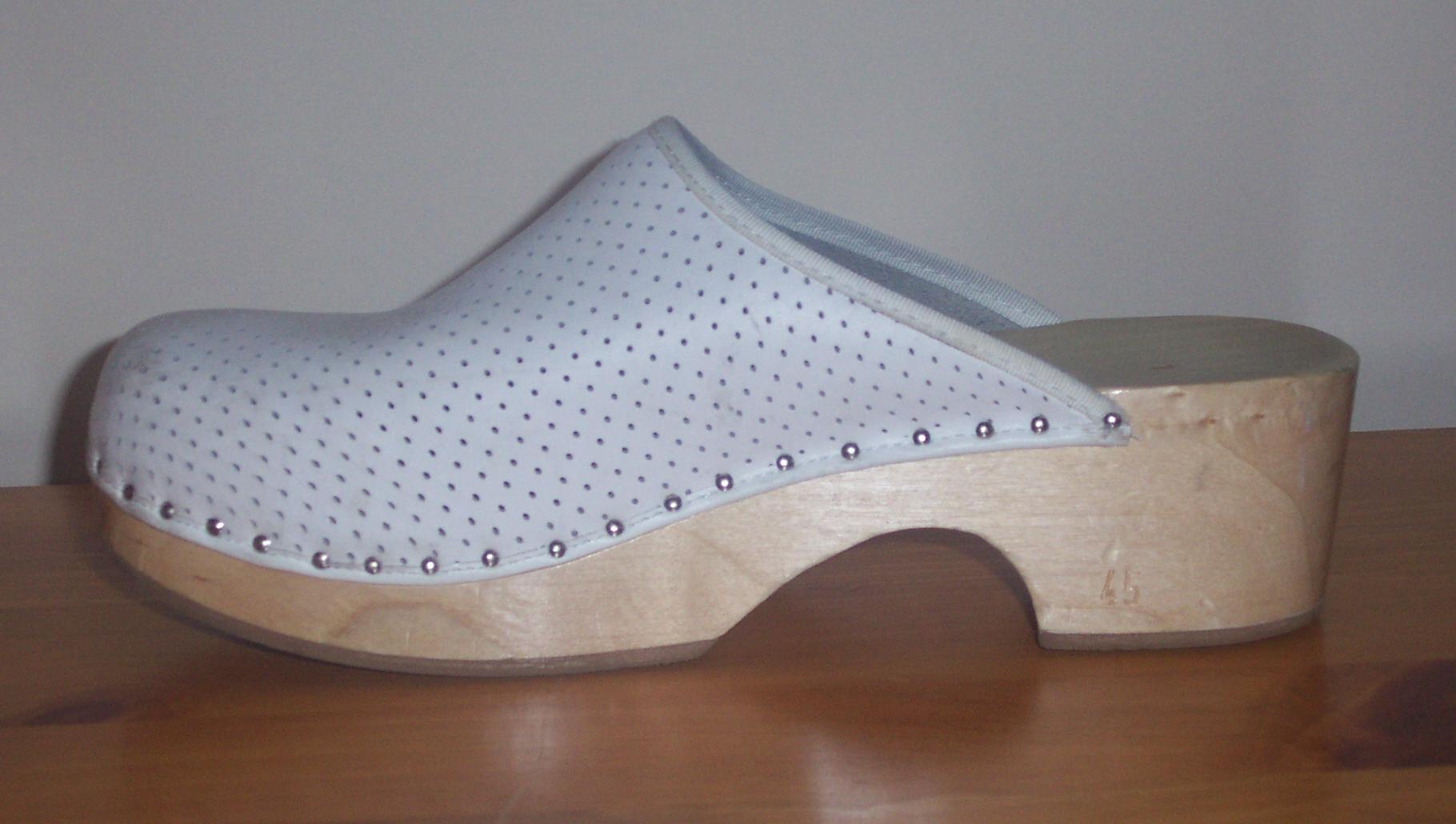Traditional clogs in Europe
Since wooden footwear was a hand-made product, the shape of the footwear, as well as its production process showed great local and regional diversity in style. At the beginning of the 20th century machine-made wooden footwear was introduced. After WW2, in particular, wooden shoes disappeared from sight. They were replaced by more fashionable all-leather and synthetic footwear.
Strendy types: Swedes
At present,only the so-called Swedish clogs (wooden bottom and leather top) is still seen as a trendy fashion item, often as ladies’ high-heeled boots. Nevertheless, traditional wooden footwear is still popular in several regions in Europe and in some occupations, for its practical use. Some historic local variations have recently been replaced by uniform national models.

De Boer-Olij p. 13
Wiedijk p.2